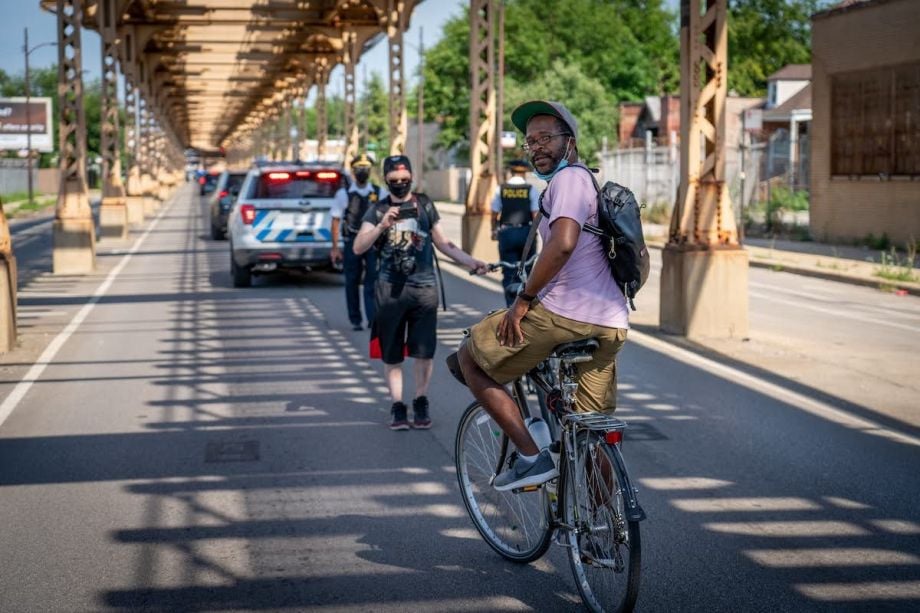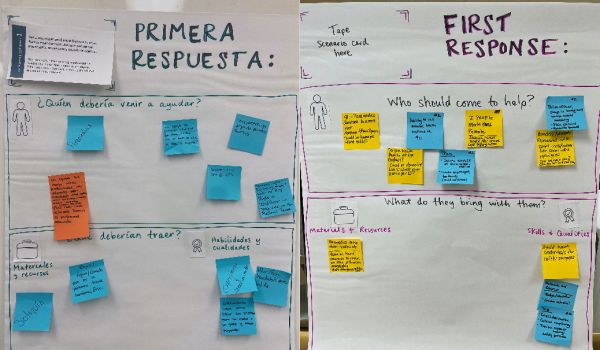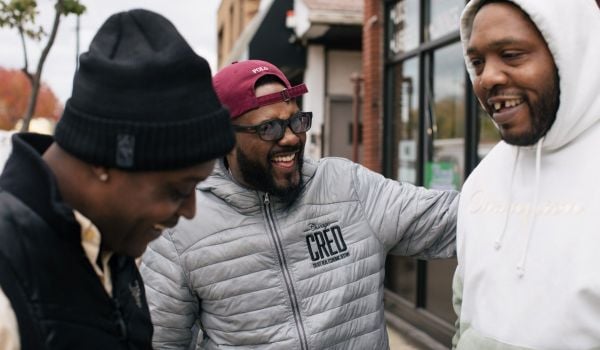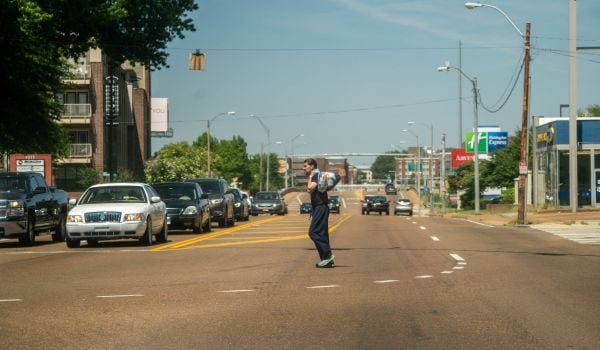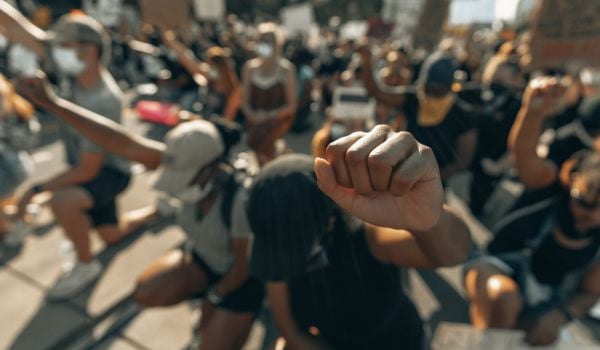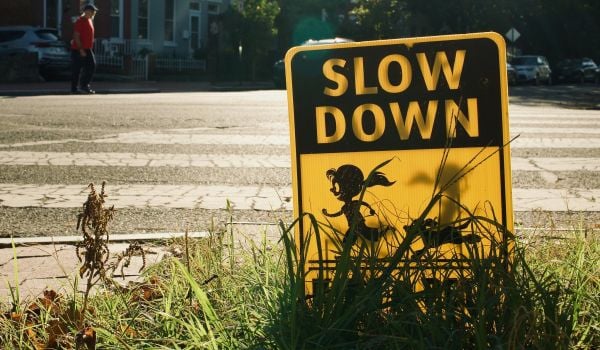To some, it may sound like a beautiful vision: zero traffic fatalities on our nation’s highways and streets. For Black people, however, Vision Zero has an ugly underside.
First implemented in Sweden and now embraced by dozens of American cities and states, Vision Zero is a strategy to eliminate all traffic fatalities and severe injuries. The strategy varies from place to place, but it typically emphasizes the “Es”: engineering, education and stepped-up enforcement of traffic laws. That last “E,” enforcement, is where it gets ugly for people who look like me.
It’s no secret that racism and racial bias permeate American law enforcement. There are, of course, the high-profile, unjust murders of Black men and women — George Floyd, Breonna Taylor, Philando Castile and so many more — at the hands of police. Black people are killed by police at more than twice the rate of white people. And then there are the daily indignities, and worse — the suspicion and scrutiny that so often characterize our encounters with police.
I have stories; we all do. Like the summer night in 1992, when I was hanging out with friends outside my mother’s home in the Chatham neighborhood on the Southside of Chicago. Yes, we were loud and clowning around — talking, laughing, chanting, stepping and engaging in social activities befitting a boisterous group of male teenagers. No, we were not drinking, smoking, carrying guns or engaging in any other illegal activities.
First, we heard the faint sounds of police sirens, which soon became louder and closer. Suddenly, four police cars, with sirens blaring and lights flashing, came racing toward us from both directions on the one-way street. Before the cars even came to a full stop, the doors opened and a half-dozen police officers jumped out with their guns drawn on me and my friends.
We stood there, confused, shocked and scared. A couple of seconds ticked by, then an officer yelled out at the top of his voice, “Same ol’ N——- shit.” The officers searched us and quickly realized their level of aggression and tactical readiness was completely unwarranted. With little conversation and no acknowledgment of their mistake, the officers were back in their squad cars, rolling away.
Now, read the previous paragraph again with your eyes closed and imagine a different ending. Imagine my hotheaded self jumping into the face of the officer who had just used the N-word. Or imagine my friend Nate instinctively reaching into his car to grab his wallet. One of us may have been arrested and convicted. One of us may have been shot. And, yes, one of us was the twitch of a finger on the gun’s trigger away from being killed unjustly by the Chicago Police Department.
The (mostly white) architects of Vision Zero do not see what I see: For Black people, increased enforcement of traffic laws will lead to more deadly encounters with the police.
We know, for example, that Black cyclists are disproportionately targeted for enforcement. Research conducted by my organization, Equiticity, found that in Chicago, about eight times as many tickets were issued, per capita, in majority-Black neighborhoods as in majority-white neighborhoods.
This “biking where Black” problem speaks to racially biased enforcement, but it also reveals stark inequities in infrastructure. About 90% of bike citations in Chicago are given for riding on the sidewalk. But riding on the sidewalk is a rational choice for Black cyclists since our neighborhoods have far fewer designated bike lanes than white neighborhoods. So Black cyclists experience two compounding inequities: first, through neglect and disinvestment which robs us of safe places to ride; and second, with traffic citations when we seek the relative safety of the sidewalk.
And often, there isn’t even a sidewalk. Across the U.S., low-income neighborhoods, which are disproportionately home to Black and Brown people, are much less likely than affluent white neighborhoods to have continuous sidewalks. That’s one reason why Black and Brown people are twice as likely as white people to be killed while walking.
These inequities in infrastructure illuminate a better path to reducing traffic deaths. We know that sidewalks can reduce car/pedestrian crashes by up to 89%. And we know that the best way to make streets safer for cyclists and pedestrians is to build separated, protected bike lanes. Portland, Oregon, did that, and saw its road fatality rate drop by 75%, even as more cyclists took to the streets.
We need to focus primarily on the nationally accepted strategies of engineering (redesign streets to make them safer) and education (implement a compelling, comprehensive educational campaign to teach and inspire people to drive more safely). We should not include a police traffic enforcement strategy as part of Vision Zero. Further, we should create a new traffic safety framework with racial equity and mobility justice operationalized from the beginning and created by Black and Brown people in neighborhoods disproportionately impacted by traffic violence.
Some transportation advocates are waking up to the dangers of stepped-up enforcement. Two national organizations — Safe Routes Partnership and the League of American Bicyclists — have completely removed police enforcement from their frameworks. Local advocacy groups in Minneapolis, Philadelphia, Atlanta and elsewhere have come out against enforcement in Vision Zero.
It’s time for governments and advocacy groups that care about traffic safety to expand their field of vision and make an operational commitment to racial equity and mobility justice. It is time for the leadership on traffic safety to come from the communities most impacted by traffic violence: Black and Brown people.
We must remove “enforcement” from Vision Zero implementation and concentrate instead on effective engineering and education strategies. If we fail to do so, what others consider a beautiful vision will continue to collide with the ugly reality of racism in America — with tragic results.
Olatunji Oboi Reed works globally as a racial equity tactician, increased mobility advocate and racial justice activist. He serves as the founding President & CEO of Equiticity, a racial equity movement harnessing collective power through research, advocacy, programs and Community Mobility Rituals to improve the lives of Black, Brown and Indigenous people in our society. Oboi also serves as Co-Chair of the Transportation Equity Network and as a Steering Committee Member of PolicyLink’s Transportation Equity Caucus. Oboi is also a member of the Chicago Metropolitan Agency for Planning’s Regional Economy Committee, 2018 Grist Fixers Cohort, National Transit Justice Network, and the Justice Reform Task Force. He is a frequent speaker, panelist and facilitator at conferences around the world.

